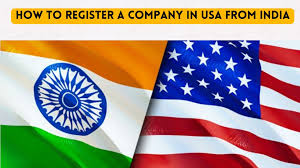Arijit Pasayat, J.@mdashLeave granted.
2. Challenge in this appeal is to the judgment passed by a Division Bench of Bombay High Court, dismissing the appeal filed by the appellants who were convicted by learned Additional Sessions Judge, Satara, for offences punishable under Sections 302, 307, 452 read with Section 34 of the Indian Penal Code, 1860 (in short ''IPC''). For the first two offences each was sentenced to undergo imprisonment for life and to pay a fine with default stipulation. For the offence relatable to Section 452 IPC, each was sentenced to undergo imprisonment for one year and to pay a fine with default stipulation.
3. Prosecution case which led to the trial of the appellants was as follows:
There was family feud between the family of the accused and the family of the complainant who were close relations. Suits are filed and suits were pending. On 10.10.1996, around 12.00 p.m. Dattatraya one of the injured persons was assaulted by the accused persons and on being stopped by mother-in-law of Dattatraya accused ran away. Thereafter Tanaji (hereinafter referred to as deceased) came home and took Dattatraya by rickshaw towards hospital. They were accosted at Gandhi Chowk by accused persons who broke the glass of rickshaw, turned down the rickshaw, pulled out the victims and assaulted them. This assault was witnessed by Jayashri, wife of Tanaji. She, therefore, filed a complaint before the police. Investigation was started and on completion of investigation, the accused persons were charged of having committed murder of the deceased Tanaji and grievous hurt to Dattatraya.
4. In order to establish its version prosecution examined 18 witnesses. PWs. 11, 12 and 13 were stated to be eye-witnesses in addition to PW9 who also claimed to have witnessed a part of the incidence.
5. The Trial Court accepted the prosecution version and held that the evidence of PWs. 11, 12 and 13 clearly establish the prosecution version. It was noted that PW 12 was injured in the incident.
6. Before the High Court it was submitted that there were contradictions and omissions falsifying the prosecution version. The High Court did not accept the version and upheld the conviction and maintained their sentence.
7. In support of the appeal, leaned counsel for the appellants submitted that PW''s 9 presence at the spot appears to be doubtful and in fact the Trial Court noted that she had not seen the actual incident but after learning about the occurrence she came to the place and her husband told her that it was the accused who had beaten him. It is also submitted that PW11 had reason to falsely implicate the accused persons. Learned Counsel for the respondent-State on the other hand supported the judgment of the Trial Court as well as the High Court.
8. Though the Trial Court observed that PWs 9 and 11 may have tried to exaggerate because former was the widow and latter was injured victim, the evidence of PWs 12 and 13 establish the prosecution version.
9. The Trial Court was not justified in holding that because PW11 was an injured witness he may have reason to falsely implicate the accused. However, as rightly observed by the Trial Court and the High Court, the evidence of PWs 12 and 13 does not suffer from any deficiency. PWs 11, 12 and 13 were cross-examined at length but nothing substantial could be elicited to destroy the credibility of their version. As a matter of fact, the evidence of injured person who is examined as a witness lends more credence, because normally he would not falsely implicate a person thereby protecting the actual assailant.
10. The Trial Court as well as the High Court have rightly placed reliance on the evidence of the eye-witnesses and as noted above their evidence was clear and cogent.
11. That being so, the impugned judgment of the High Court does not suffer from any infirmity to warrant interference.
12. The appeal fails and is dismissed.

